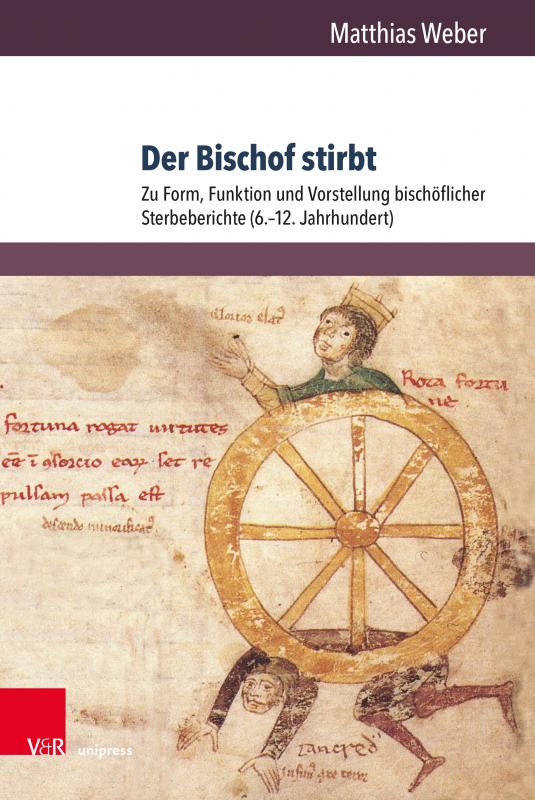
Band
der Reihe "Orbis Mediaevalis / Vorstellungswelten des Mittelalters"
85,00
€
inkl. MwSt
- Verlag: V&R unipress
- Themenbereich: Geschichte und Archäologie - Geschichte
- Genre: keine Angabe / keine Angabe
- Seitenzahl: 663
- Ersterscheinung: 14.11.2022
- ISBN: 9783847114918
Der Bischof stirbt
Zu Form, Funktion und Vorstellung bischöflicher Sterbeberichte (6.–12. Jahrhundert)
Der Tod als fundamentale kulturelle und religiöse Größe findet besondere Berücksichtigung bei der Schilderung des Ablebens eines Bischofs – doch wandeln sich sowohl die Vorstellungen vom Tod, die Anforderungen an Bischöfe und auch die Art, das Geschehene wiederzugeben. Ohne das Zentrum der Handlung darzustellen, erhalten Todesberichte dadurch ein besonderes Aussagepotential, gibt doch ihre Analyse weniger Auskunft über ein tatsächliches Geschehen als über den Wandel der Vorstellungswelt sowie ihrer Ausdrucksweisen und -möglichkeiten. In einem Überblick von grundlegenden Bestimmungen der (Spät-)Antike und eingehenden Analysen der narrativen Quellen des westeuropäischen Mittelalters bis zur Zeit des »Investiturstreits« zeichnet Matthias Weber die vorstellungsgeschichtliche Entwicklung nach, die in der Verkettung von Todesvorstellungen, Bischofsideal und Darstellungsweise zu erkennen ist.
Death as a fundamental cultural and religious factor is given special consideration in the account of a bishop’s demise – but the ideas of death, the demands placed on bishops, and the way of portraying what has happened are changing. Without representing the center of the plot, death reports thus acquire a special expressive potential, since their analysis provides information less about actual events than about the change in the world of imagination and its modes and possibilities of expression. In an overview of fundamental determinations of (late) antiquity and in-depth analyses of the narrative sources of the Western European Middle Ages up to the time of the “Investiture Controversy,” Matthias Weber traces the development in the history of imagination that can be seen in the connection of ideas of death, the bishop’s ideal, and the mode of representation.
Death as a fundamental cultural and religious factor is given special consideration in the account of a bishop’s demise – but the ideas of death, the demands placed on bishops, and the way of portraying what has happened are changing. Without representing the center of the plot, death reports thus acquire a special expressive potential, since their analysis provides information less about actual events than about the change in the world of imagination and its modes and possibilities of expression. In an overview of fundamental determinations of (late) antiquity and in-depth analyses of the narrative sources of the Western European Middle Ages up to the time of the “Investiture Controversy,” Matthias Weber traces the development in the history of imagination that can be seen in the connection of ideas of death, the bishop’s ideal, and the mode of representation.
Meinungen aus der Lesejury
Es sind noch keine Einträge vorhanden.

